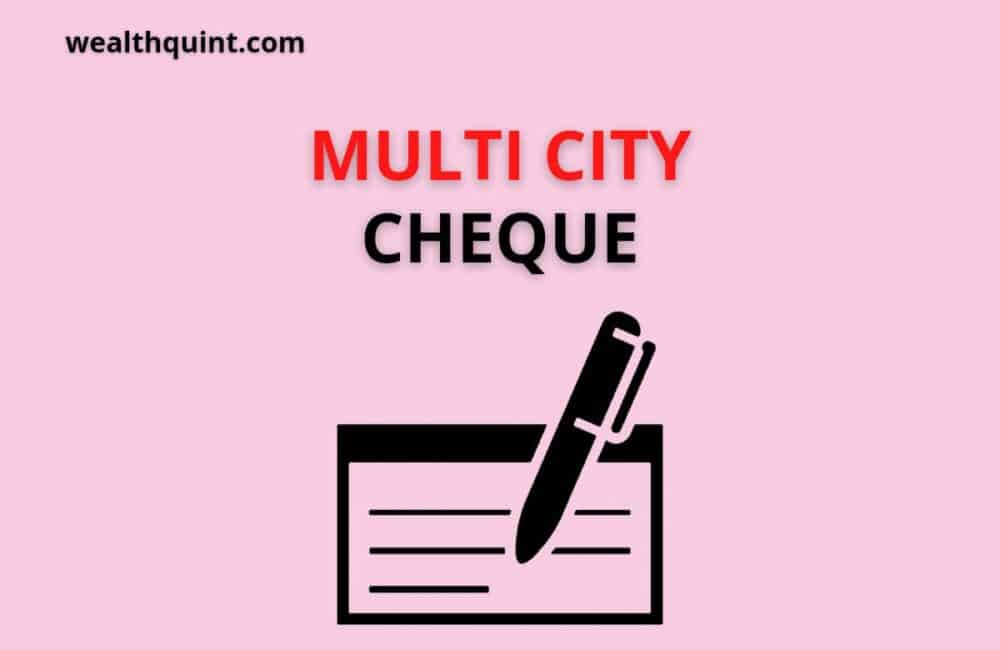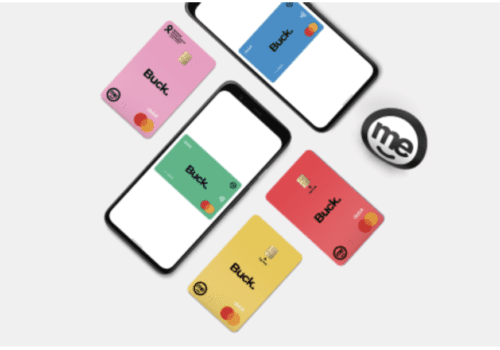When it comes to making payment of the heavy amounts, many institutions demand cheques instead of accepting digital or any other mode of payment. On the other hand, the canceled cheque has its importance which can not be replaced with any other documents.
A canceled cheque is seen as a legal document that is widely used when you purchase any costly service or product because the cheque is handy and can be attached with any document as a legal paper.
However, in this article, you will learn about the benefits of multi-city cheques. You will also learn the difference between a normal and a multi-city cheque by the end of this article. And the procedure to verify the multi-city cheque.
But, before we jump deeper into it, let’s know what precisely the multi-city cheque is?
What Is A Multi City Cheque?
A multi-city cheque is a piece of paper or document that can direct any branch of a specific bank across the country to pay the amount to the person the name cheque is issued. But, there is a specific condition that the drawee must have a sufficient amount in their account. In case it bounced, the drawee may suffer from a penalty or legal issue.
Suppose you are making the payment above fifty lac through cheque. The bank will verify it by sending two authorized officers for verification before passing the cheque. And if you are making a payment of over 50 thousand rupees, the bank verifies some of the vital information on a call.
Also Read: What is Cheque & Different Types of Cheque
What Are The Benefit Of Multi City Cheque?
Some of the significant benefits of multi-city cheques:
- In the case of the home branch, a multi-city check has no limit or restrictions to transfer funds.
- However, in the case of other than the home branch, There is a limit on making payment through multi-city cheque.
- All the mini branches managed by one manager and one clerk have a limit of 5 lac rupees transferred through cheque irrespective of the legend (ceiling) written on the cheque.
- For other than the home branch, saving account holders other than NRI/HNI are applicable to transfer the fund of only 10 lac rupees.
- On the other hand, an NRI or HNI person having a savings account can transfer up to 50 lac rupees.
- The person having a current account can transfer up to fifty lac through a cheque or multi-city cheque.
- If you are visiting other than your home branch, you can only withdraw up to fifty thousand cash for yourself by using a multi-city cheque. However, you can not make third-party cash payments.
- The multi-city cheque has an extra layer of security. It features the reverse printing of account numbers.
- Payment up to 5 lac rupees is allowed after general scrutiny other than home branches if both parties are non-home branches.
- In the case of other than a home branch, Cash payment for Multi-City Cheque holders is restricted to a specific limit depending upon the type of account.
- A multi-city cheque is issued by default to the NRI, HRI, trust, society, and other organizations.
These are the essential guidelines of the State Bank of India. The rules may be different for different banks for the different types of account holders.
Also Read: How to Fill Self Cheque?
What Is The Limit Of Multi City Cheques?
A multi-city cheque can be accepted in all branches and other than home branches, which are a significant benefit. However, it has some limitations, which are discussed in detail below.
While discussing SBI, the limitation of cash withdrawal using a multi-city cheque has been increased up to 1 lac rupees if they withdraw for themselves only. But, in the case of third-party payment, the limitation has increased to fifty thousand rupees only.
Earlier, you were only able to withdraw a cash amount of 50,000 INR only, for yourself. And there was no possibility of cash withdrawal for any of the third-party payments. However, the older people were given some relief to withdraw up to ten thousand rupees cash.
If you are visiting other than your home branch, you can only withdraw up to fifty thousand cash for yourself by using a multi-city cheque. However, you can not make third-party cash payments.
Being the most prominent government bank, the state bank of India has a limit of five lac rupees only through multi-city cheques for personal banking customers.
As per the new rule of RBI (Reserve bank of India), effective from 1 January 2021, there is a process of re-confirming the details if the drawee is making a payment of over fifty thousand rupees.
What Is SBI Multi City Cheque?
An SBI multi-city cheque is drawn by its customers in favor of any entity or person named therein, which is accepted or payable at all SBI branches by keeping in mind specific terms and conditions of RBI (Reserve bank of India).
The bank’s branch manager issues a multi-city cheque without ceiling/legend on a special request by the account holder.
It has an upper limit of 10 lac rupees for Indian citizens having a savings account. On the other hand, for the NRIs and HNIs, the upper limit is 50 lac rupees for the savings account holders.
However, in the case of the current account of corporations, institutions, or any government accounts, there is a limit of 50 lac rupees. While in the case of CPAP (Corporate Client Cheques payable at par), it’s unlimited.
Also Read: Crossing of Cheques
Can I Deposit Cheque In Any City?
Yes, if you have a multi-city cheque, you can deposit it in any branch and any other city. However, you will have to keep in mind specific terms and conditions of withdrawal cash or other transactions.
What Is A Multi City Cheque Vs. A Normal Cheque?
The multi-city cheque is filled by the account holder that can be payable at any branch of the bank, too, which is done in case of actual transactions. The money is deducted from the account of the drawee.
On the other hand, a normal check is released by the bank when you request. It is also called a banker’s cheque, which is used to send money to banks.
However, If you want to understand the difference between a multi-city cheque vs. a normal cheque, then you will have to dig some previous history of the cheque system.
Earlier, when someone issued a cheque, it needed to go to the respective branch for clearance. The process was time taking and lengthy, with lots of risks if the cheque was misplaced.
Suppose if the cheque is misleading or suspicious, then the verification process was also time-consuming due to the lack of an effective security layer on the cheque. The bank depended on the other agencies as they didn’t have their transport or courier services.
By keeping in mind these all issues, the RBI introduced multi-city checks in the banking system. After the introduction of the multi-city check, it becomes easier for the banks and their customers too. Now, the banks can entertain the other branches or city’s cheque in their branch which saves the time and energy both.
Now, it does not require sending cheques to other stations. The cheque clearance becomes more effortless and convenient at the local station. Also, the name of such banks was mentioned on the backside of the cheque, and the remark is also given on the backside of the cheque.
In a similar way, when it comes to the international cheque payment, the international banks having branches in India also started accepting as per the RBI rule. So, these are called multi-city cheques.
Now, the introduction of a CBS (Core Banking System) has almost eradicated the differences between normal cheques and multi-city cheques. Because the cheque can be quickly cleared at any branch, in this way, you can say there is no need for a multi-city cheque, or each cheque is a multi-city cheque.
Also Read: What is Cancel Cheque & Why We Need it?
What Is The CBS System In Banking?
The term CBS stands for the core banking system, which allows the banking customers to operate and access their accounts to perform transactions from any branch of the particular bank.
How Do I Verify Multi City Cheque?
The easiest way to verify a multi-city cheque is; you need to look at the top of the cheque. There will be a phrase that says “PAYABLE AT ALL BRANCHES” in the top middle area of the cheque.
On the other hand, you will not see this phrase in another type of cheque. But, you don’t need to worry about it because if you apply for opening a bank account. Most of the banks will provide you with multi-city checks by default.
To Sum Up
The introduction of multi-city cheques and the facility of the core banking system have reduced the pain of the banking system and the customers. Now, it’s quicker, easier, and convenient than earlier.
Once, it was a lengthy and time taking procedure, but now, it takes a maximum of 3 to 5 working days for the clearance of any check. In the case of the same branch, it can be cleared within the same days too.
Recommended:
How to Fill a Cheque – 5 Steps Cheque Filling Guide



